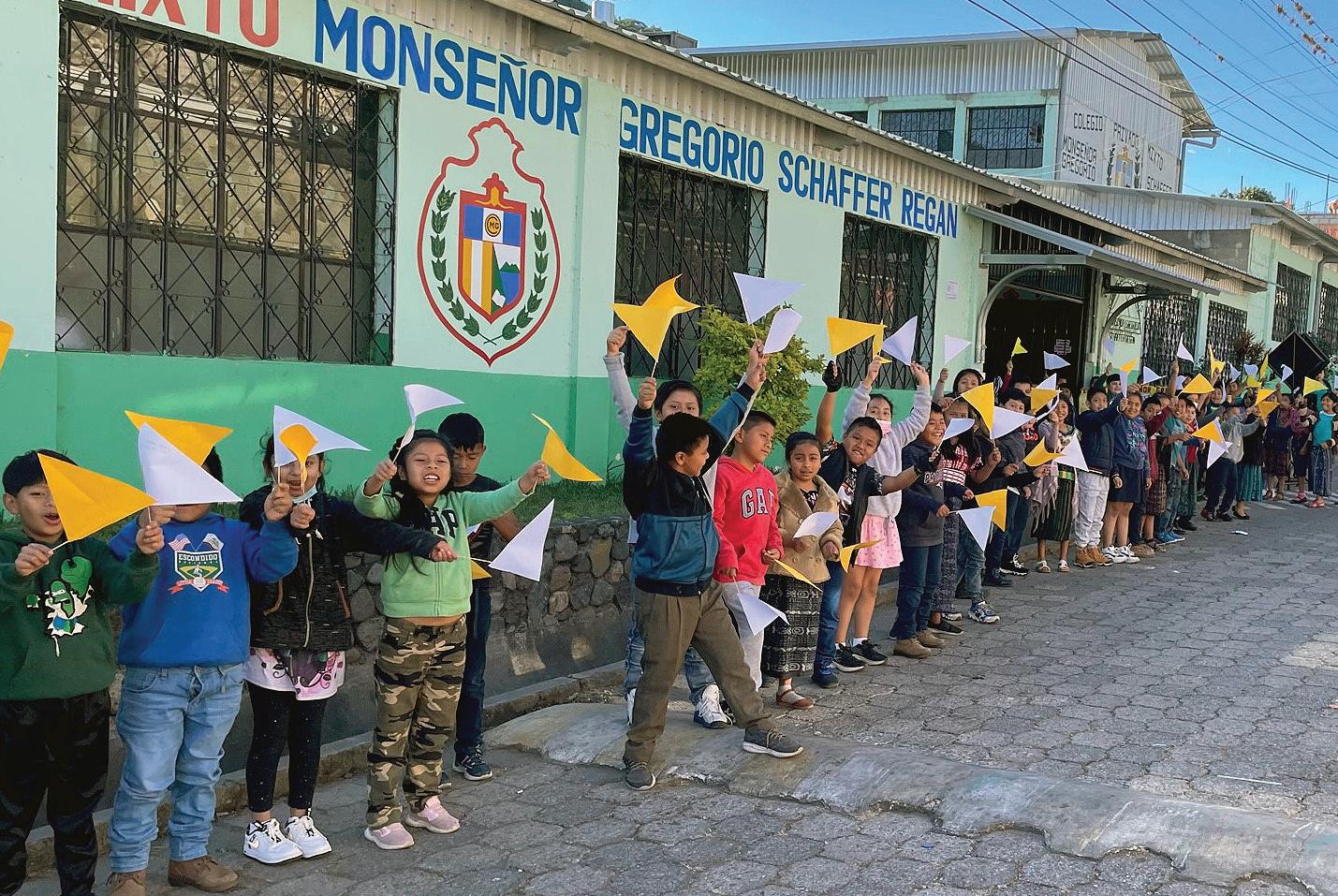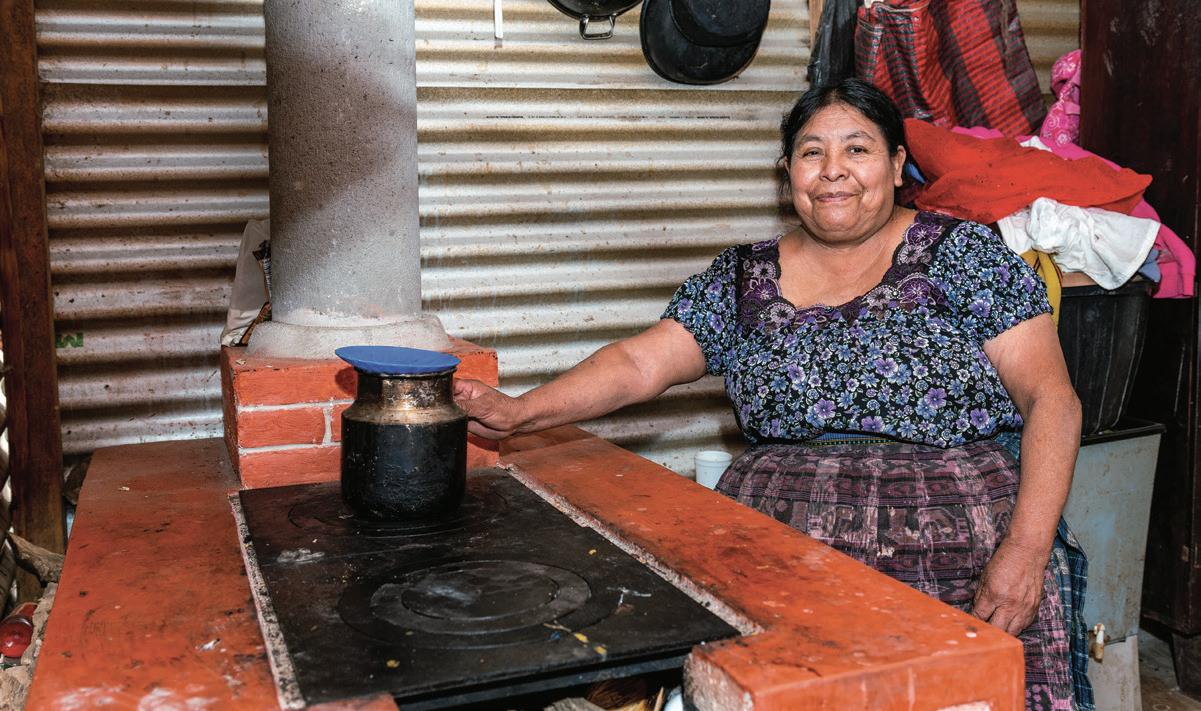
4 minute read
A warm Guatemalan welcome - Part 2
Bishop Zielinski reflects on pastoral visit to San Lucas Toliman
by Bishop Chad Zielinski
Advertisement
Friday, January 27
There is a common expression in Spanish asked early in the morning, Como amaniciste? Translated, “How was your rising?”
It was the second day of my pastoral visit to the San Lucas Toliman Mission, and I was awakened early, at 3:30 a.m., as the roosters responded fullthroatedly to the approaching day. Their morning trumpeting seemed to usher in the sun’s rising and God’s presentation of the order of the day. Shortly following, there was the sound of what appeared to be a large animal (later determined to be an active house cat) scampering back and forth across the roof of where I was staying.
With all this anxious activity, I rose at 4 a.m. to make some splendid Café Juan Ana, a coffee produced, roasted, and packaged in San Lucas. My favorite part of the day is praying the Liturgy of the Hours with the smell of strong coffee wafting through the air.
Shortly after 8 a.m., I walked to Colegio Monseñor Gregorio Schaffer, the area elementary school located just a couple blocks from where I was staying. The children lined the street waving yellow flags and chanting Bienvenidos (“Welcome” in Spanish). They were singing at the top of their lungs. I was deeply touched and profoundly humbled by their welcome. I took a tour of the school which traces back to 1968 when it was founded by the Mission’s pastor at the time, Fr. Greg Schaffer and the School Sisters of Notre Dame. Today, the school provides education annually to over 650 preschool through sixth-grade students.
Fr. Greg believed that you could change society through education, and when he arrived in Guatemala in 1963, those in extreme poverty had little access to decent education opportunities.
Blockhouse construction
One of the San Lucas Mission’s major programs involves building homes for families. According to the Friends of San Lucas website, https://sanlucasmission.org, the need for dignified, earthquakeresistant housing in San Lucas and the surrounding communities is constant. Through the financial support of generous donors to the Mission, 540-square-foot block houses, including a concrete floor, plumbed indoor bathroom, and a fuel-efficient stove, are being built.
I was able to witness first-hand the fruits of the construction program when I met a young woman and her child who were waiting to move into one of the block homes. In the meantime they were living in a simple one-room house covered with a tin roof, a dirt floor, and a single bed. There was no dresser or storage container, so clothes were kept in large shopping bags hanging by a nail on a wooden post that supported the roof and walls.
I was also able to be present at a dedication of a block house by the director of the construction program, who signed an agreement with the family that was to move in. The architect and builder were also present. It was an honor to extend a blessing over the home. Although the house was extremely small, with a bathroom and three rooms, it was soon to be home to three generations of family members who were brought to tears as they shared their deep gratitude for the gift of the house, which cost about $12,000.
The construction program also provides families with cement cooking stoves that are properly vented to a chimney. I have been told that poor ventilation has resulted in high numbers of lung problems.

Rural medical program
Later that day, I visited the Mission’s small rural clinic that focuses on infant malnutrition, education, and care. Many shops on every block offer soda pop, potato chips, cookies, and candies. This diet of heavy sugar and processed foods has caused a significant rise in diabetes among the native people.
A significant part of the clinic’s operations is educating mothers on a balanced diet for their children. This program has had a direct impact on the health of those residing in small rural communities.
Women’s Center visit
Fr. Greg was very instrumental in establishing a Women’s Center that provides training for various skills. I visited rooms where sewing, weaving, and clothesmaking were accomplished. Cooking classes are also offered, and there is a natural medicinal herb garden on the Women’s Center campus. These educational resources allow women to learn a skill or trade, sell their products, and enjoy social time. It is a most impressive center that provides opportunities in a society that is a maledominated workforce.
Honoring the late Fr. Greg
Around 2 p.m. that day, I celebrated with the people a special Mass in honor of Fr. Greg Schaffer who died May 24, 2012, from lymphoma/cancer. He was 78. “Padre Schaffer” was a Diocese of New Ulm priest who served the Mission for 48 years. The choir during Mass consisted of schoolchildren and was most impressive. They sang with great joy!
Following Mass, everyone gathered outside in front of the church, where a memorial of Fr. Greg was erected. There was a formal ceremony with various leaders offering speeches about how Fr. Greg impacted the community of San Lucas Toliman and 16 other neighboring communities. The memorial ceremony also included unveiling a set of Fr. Greg’s footprints that were imprinted in a concrete block. I was asked to bless these footprints marking the 50 years since Fr. Greg’s historic walk from the steps of the Minnesota State Capitol to San Lucas Toliman to raise awareness and donations for the Mission’s life-changing work. A small memorial plaque was gifted to me to take back home.
Following the memorial, we processed to Fr. Greg’s place of rest at the community cemetery. A lot of flower arrangements were presented, more singing and loads of fireworks were lit.
I was exhausted at the end of the day and turned in early.
Stay tuned! The bishop’s final reflection on his pastoral visit to Guatemala will appear in the June Prairie Catholic.










